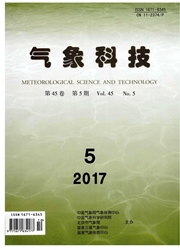

 中文摘要:
中文摘要:
为了探讨城市化进程对寿县国家气候观象台探测环境及气象要素的影响程度,本文利用高分辨陆地卫星影像结合GIS技术揭示了近25年(1987—2012)寿县县城的城市化进程及其对气象观测场周边土地利用/覆盖变化以及热环境的影响过程;以搬迁后新址为参考站,进一步分析了城市扩张对气温和风的影响。结果表明:1城市化进程中的土地利用改变是破坏寿县观象台探测环境代表性主要原因;2城建用地是影响和构成寿县旧址周围缓冲区较高地表温度的热环境分布主体,而植被和水体是较低地表温度的热环境分布主体;3城市化扩张造成旧址年平均气温偏高和年平均风速偏小,由于城市化的影响,寿县新旧站址风向的相符率仅为15%左右,且城市扩张对气象要素的影响呈现明显的日变化和季节变化特征。控制台站周边城建用地的规模和布局是改善台站热环境以及提高台站观测区域代表性的重要举措。
 英文摘要:
英文摘要:
To explore the impact of urbanization on meteorological observation and its environment, taking the national climate stations of Shouxian (SX) as an example to investigate the influence of urbanization on land use/land cover (LULC), the thermal environment of the station and the temperature/wind and their relationships are studied by using the Landsat data along with GIS and meteorological data. Results show: (1) The urbanization-induced LULC change is the main cause of influencing the representativeness of meteorological stations. (2) The urban construction land was the main factor affecting the spatial distribution of the thermal environment around these stations, and along with the propulsion of urbanization, the contribution to these stations of the urban construction land were constantly enlarged. While in low and sub-low temperature zones, vegetation and water are the main contributors. (3) Take the new site as the reference station, the higher air temperature and lower wind speed are found at the old site than those at the new site, and the match rate for wind direction is only about 15%, influenced by the rapid urbanization of Shouxian. The effects of urban expansion on meteorological factors present significant diurnal and seasonal variations. Consequently, controlling the scale and layout of the urban construction land around the stations is an effective way to improve stations' thermal environment and enhance region representativeness.
 同期刊论文项目
同期刊论文项目
 同项目期刊论文
同项目期刊论文
 Influence of urbanization on the thermal environment of meteorological station: Satellite-observed e
Influence of urbanization on the thermal environment of meteorological station: Satellite-observed e 期刊信息
期刊信息
